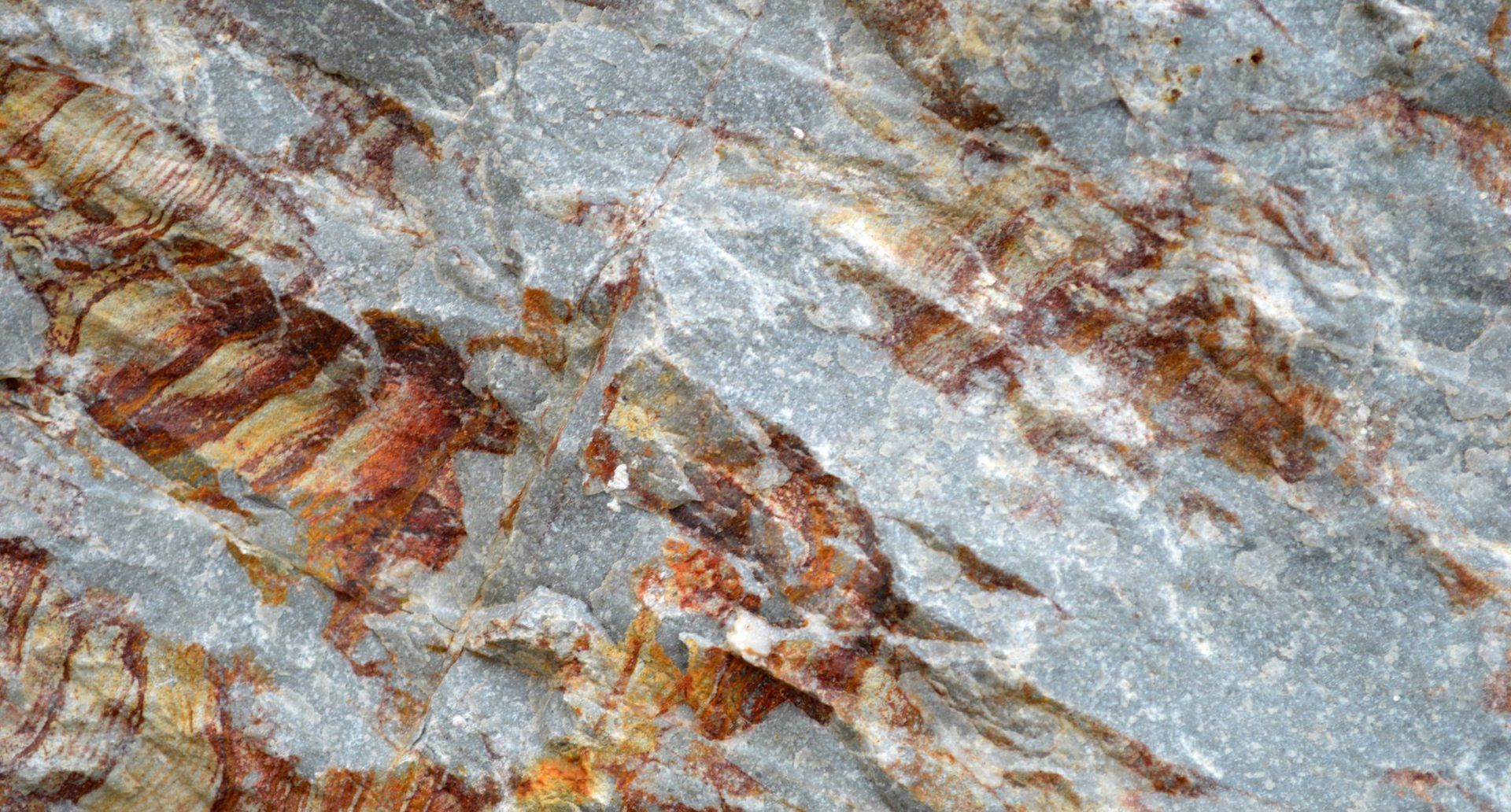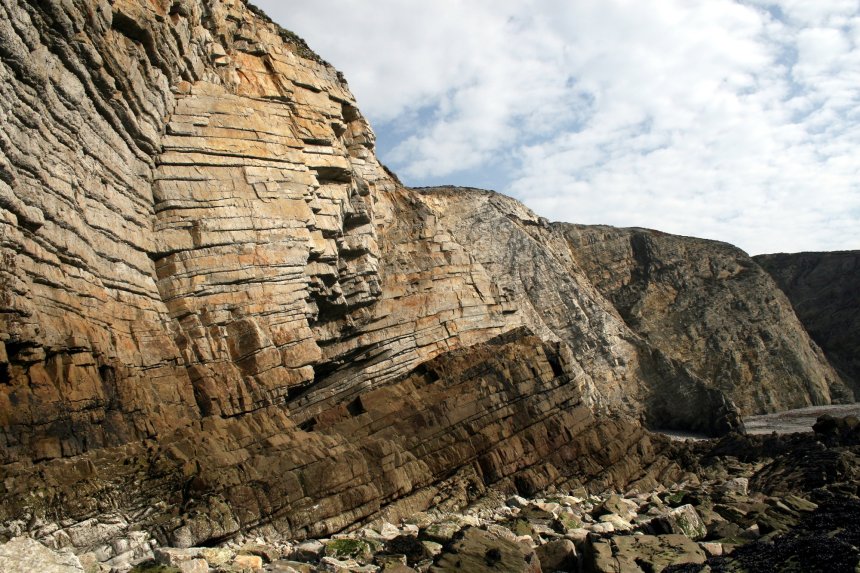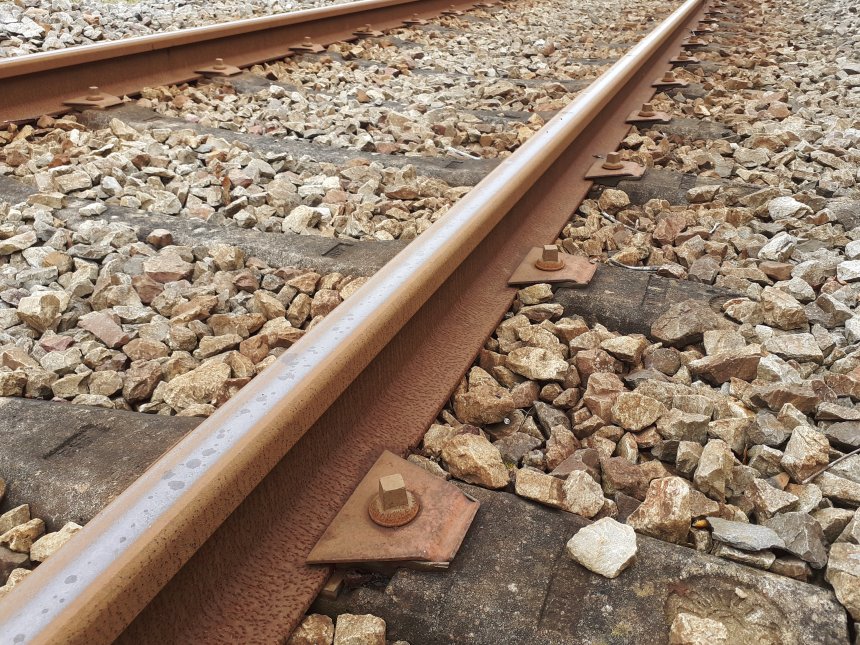Stone : quartzite
Type : metamorphic rock derived from a sedimentary rock
Age : 478 million years (age of the Armorican Sandstone facies)
Quarry : Menez Luz, Telgruc-sur-Mer (Finistère)
Resistant
Quartzite is an extremely resistant rock, so much so that quarry workers have to regularly replace the tungsten carbide teeth of their crushers. A massive rock, quartzite is composed of quartz crystals that are tightly fused together. This structure gives it exceptional strength and cohesion. This quartzite originates from sandstone—a sedimentary rock made mainly of quartz-rich sand grains.
Mountains and Cliffs
The quarry in Telgruc-sur-Mer extracts a geologically famous formation in Armorica: Armorican sandstone. This resistant geological unit forms many of the prominent features in the Armorican Massif. To the west, there’s Menez-Hom (a little over 330 meters) in Finistère, and to the east, Mont des Avaloirs (416 meters) in Mayenne, the highest peak of the massif. Armorican sandstone also shapes the majestic headlands of the Crozon Peninsula, such as Pointe de Pen-Hir and its famous Tas de Pois in Camaret-sur-Mer, and Cap de la Chèvre in Crozon.
Formed Near the South Pole
Armorican sandstone has a sedimentary origin. It mainly consists of layers of quartzite, sometimes alternating with layers of schist. These layers correspond to ancient deposits of sand and silt. Fossil traces found in these rocks confirm a shallow marine origin. This geological formation, which was created near the South Pole, is also found in Iberia on the opposite side of the Bay of Biscay.
Traditional Buildings, Roads, and Railway Ballast
Quartzite is not ideal for fine stone carving. It is very hard, and its fracture is difficult to control. Nevertheless, it was used in traditional construction. Today, this rock is processed into aggregates of various sizes. These materials are mainly used for roads and, more recently, for restoring the ballast of the Brest-Quimper railway line.



